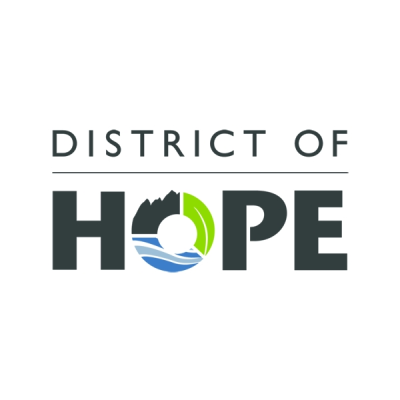Victoria/Fraser Valley – Responding to dry conditions, the Government of B.C. has announced a Level 4 drought rating for the South Coast and Lower Fraser areas due to ongoing low stream flows.
At Level 4, conditions are extremely dry. Further declines in stream, lake and aquifer levels could lead to water shortages and affect people, industry such as agriculture, wildlife, and fish stocks. All water users are urged to maximize their water conservation efforts.
The establishment of a Level 4 drought advisory signals that regional water managers may take additional regulatory actions if they are deemed necessary. Any such actions will be site-specific depending on individual stream conditions. Specific actions could include the temporary suspension of short-term water approvals or water licences in affected watersheds if necessary. Ministry water management staff will continue to monitor conditions, work closely with First Nations, local governments and key stakeholders, and provide updates as the need arises.
Although residential, agricultural and industrial users within municipalities and regional districts backed by reservoir storage are less vulnerable to water supply shortages than water users served by smaller water systems from streams, lakes and wells, all water users are encouraged to observe local water conservation bylaws to prolong water supplies and to maintain flows for fish and ecosystems.
Water users are also reminded to ensure that water intakes are screened to prevent fish from being pulled into water systems as water levels drop. Low water levels can impede the passage of salmon to spawning grounds, increase susceptibility to disease, or cause stranding or death due to low oxygen and high water temperatures.
There are no angling closure announcements in these two regions at this time. However, B.C. government fisheries biologists are monitoring approximately 60 key angling streams throughout the province, and if conditions warrant closures are possible. Closures have already occurred for streams on southern Vancouver Island, the South Okanagan and the Horsefly River in the Cariboo.
Both the Lower Mainland and South Fraser drought ratings were last adjusted on June 30, 2015, when they were increased to Level 3. While some rivers in the Howe Sound and Squamish areas are near normal for the time of year, other streams in the South Coast and Lower Fraser are well below normal.
Water conservation is everyone’s responsibility. Many communities in B.C. are prepared to deal with water supply shortages and low streamflow conditions through drought management plans and water conservation programs that are already in place.
Learn More:
B.C. Drought Information: http://www.livingwatersmart.ca/drought/
B.C. Drought Level Map: http://bcrfc.env.gov.bc.ca/lowflow/droughtmap.htm
B.C. Drought Response Plan (June 2015): http://www.livingwatersmart.ca/drought/response.html
What Can You Do?: http://www.livingwatersmart.ca/drought/action.html
Agriculture Drought Strategies: http://www.agf.gov.bc.ca/emergency/Drought/Drought.htm
Irrigation scheduling techniques and water conservation: http://www2.gov.bc.ca/assets/gov/business/natural-resource-industries/agriculture/agriculture-documents/resource-management/factsheets-and-publications/500-series/577100-1_irrigation_scheduling_techniques.pdf
For assistance in developing an irrigation schedule: http://ag-calc.irrigationbc.com/
Stream flow and precipitation conditions in B.C. are monitored by the River Forecast Centre –
- Low streamflow bulletins and advisories: http://bcrfc.env.gov.bc.ca/lowflow/index.htm
- Seven-day average streamflow map: http://bcrfc.env.gov.bc.ca/lowflow/7DayFlowGoogle.html
Groundwater levels in provincial observation wells: http://www.env.gov.bc.ca/wsd/data_searches/obswell/map/obsWells.html
Environment Canada Water Conservation: http://www.ec.gc.ca/water/en/manage/effic/e_weff.htm
Media Contacts:
Greig Bethel
Media Relations
Ministry of Forests, Lands and Natural Resource Operations
![]() 250 356-5261
250 356-5261
BACKGROUNDER Drought: A co-ordinated cross-government response
Agricultural sector
- The Ministry of Agriculture is in regular contact with B.C. farmers and ranchers, as well as the federal government, to share information on crops and livestock and technical resources, and to support scenario response planning.
- In partnership with Agriculture and Agri-Food Canada, the Ministry of Agriculture has developed an Agricultural Water Demand Model to determine how much water the agriculture industry needs today and in the future for a number of regions including Metro Vancouver, Nanaimo, Cowichan, Okanagan, Similkameen, Kettle, Nicola, Bonaparte, Salmon River, North Thompson, South Thompson, Comox, Fraser Valley, Lillooet, Pemberton, East Kootenay, Southern Gulf Island, and Cariboo. The model results can be used by each of the regions in developing their watershed plans and water reserves for agriculture. http://www2.gov.bc.ca/gov/content/industry/agriculture-seafood/agricultural-land-and-environment/agriculture-water
- The Ministry of Agriculture is working with the federal government and the agriculture industry to proactively plan for climate change and extreme weather conditions, and that partnership has resulted in regional agriculture climate adaptation strategies for several regions of the province including the Cariboo, Peace, Okanagan-Thompson, Lower Mainland, and Cowichan Valley. http://www.bcagclimateaction.ca/regional/overview/
Water Management and the Water Sustainability Act
- When the Water Sustainability Act (WSA) comes into force next year, additional provisions will enable government to better respond to drought including:
- Modifying the current priority system of water rights to make allowances for essential household needs of up to 250 litres per person per day and the authority to temporarily regulate water use during drought to protect critical environmental flows.
- Expanding government’s ability to protect aquatic ecosystems during times of water shortage by providing the minister the authority to issue a temporary order declaring a significant water shortage in a specific area and allowing water managers to define and protect critical environmental flow thresholds in streams.
- Enabling more complete water management by licensing groundwater use. All non-domestic groundwater users will be required to obtain a water licence. Domestic groundwater users will not be required to obtain a licence; however they will be subject to the WSA and its regulations.
- Maintaining the minister’s power under the Fish Protection Act to order the temporary reduction of water use to protect fish habitat. This power was first used in 2009 when low winter snow packs and a long dry summer threatened the health of kokanee salmon populations in the Upper Nicola River.
Human health
- Health authorities will continue to work with government, municipalities and others to protect and conserve water resources while these conditions remain.
Media Contacts:
Greig Bethel
Media Relations
Ministry of Forests, Lands and Natural Resource Operations
![]() 250 356-5261
250 356-5261
See More Ministry of Forests, Lands and Natural Resource Operations Stories
See more from the Ministry of Forests, Lands and Natural Resource Operations
Photos
View the BC Government’s latest photos on Flickr
Video
Watch the BC Government’s latest videos on YouTube
Sound Bites
Listen to the BC Government’s latest audio clips
Government of B.C.
- Ministries
- View BC News Stories by Ministry
- Connect
- View BC Gov Social Media channels
- BC Gov Home
- Visit BC Government main site
- Contact
- Provincial Service call centre
- Government Directory
- Search for B.C. Government Employees
- News Archives
- Find BC Gov News Releases






